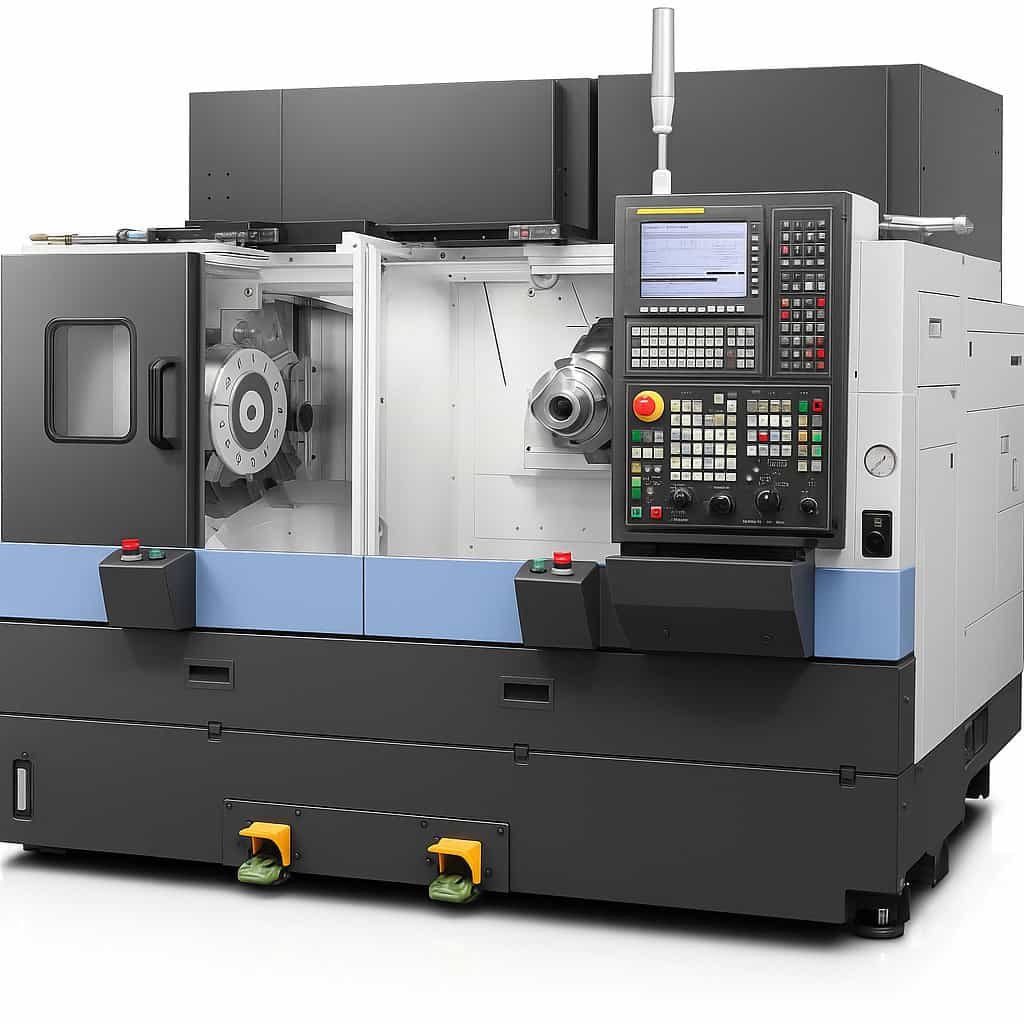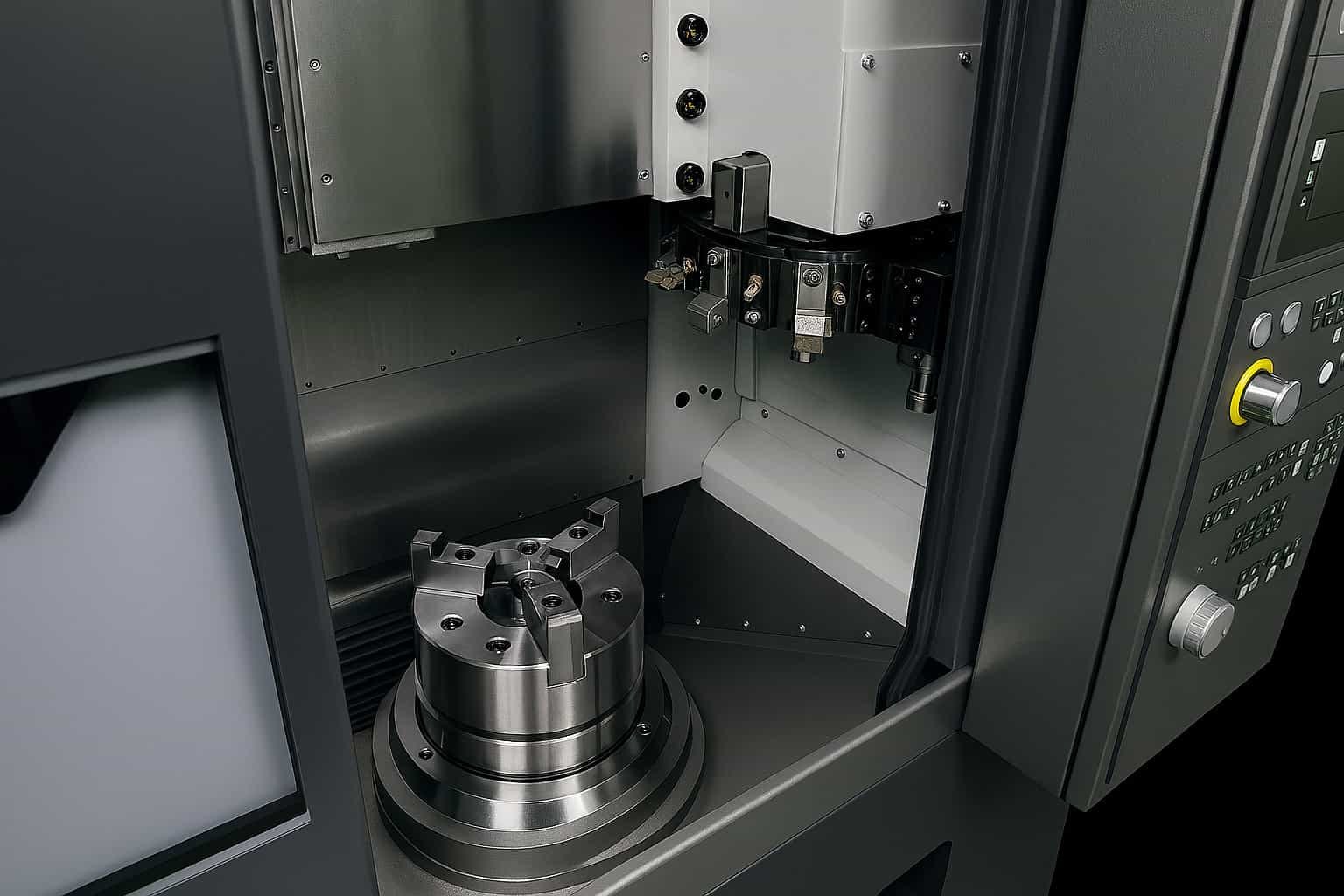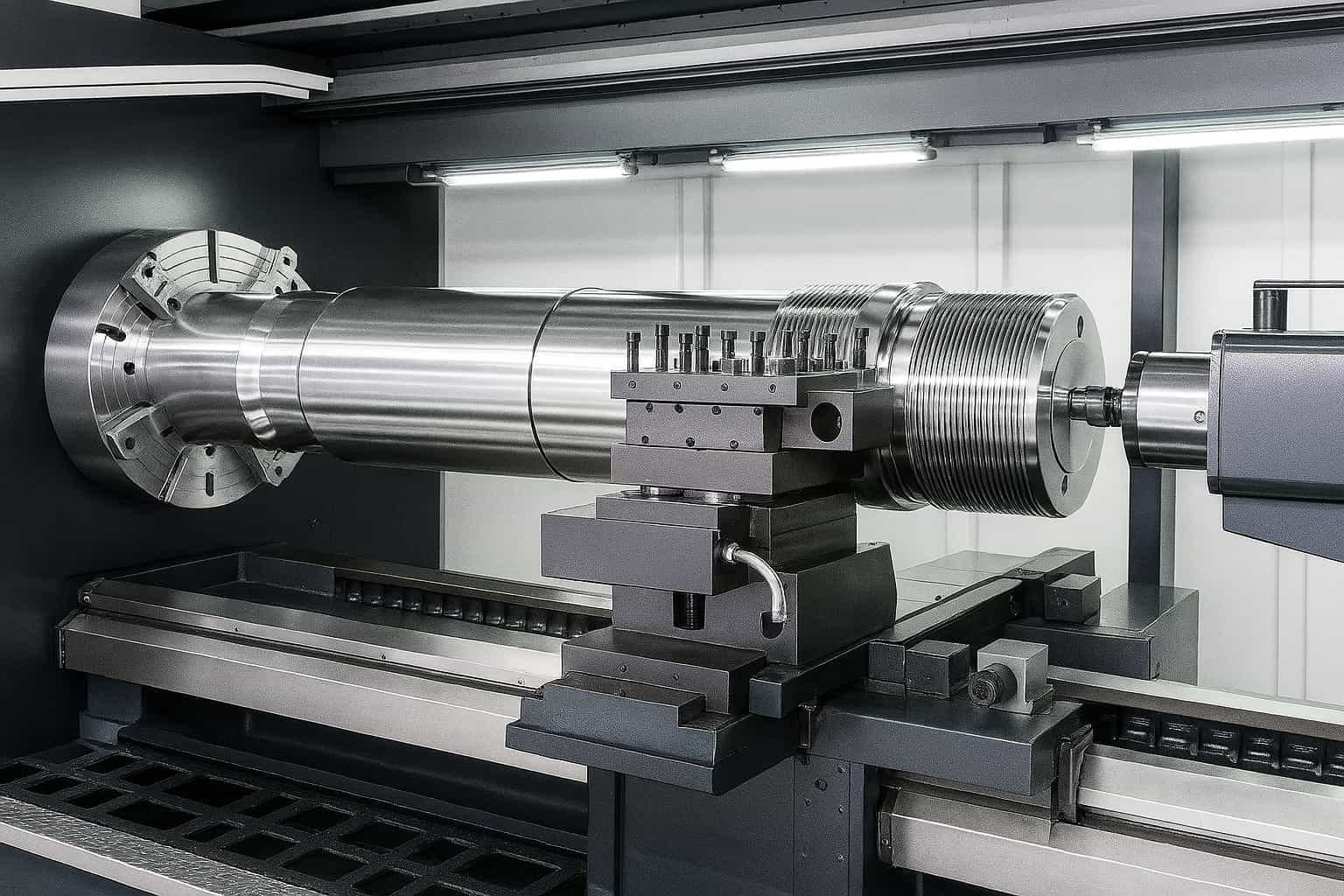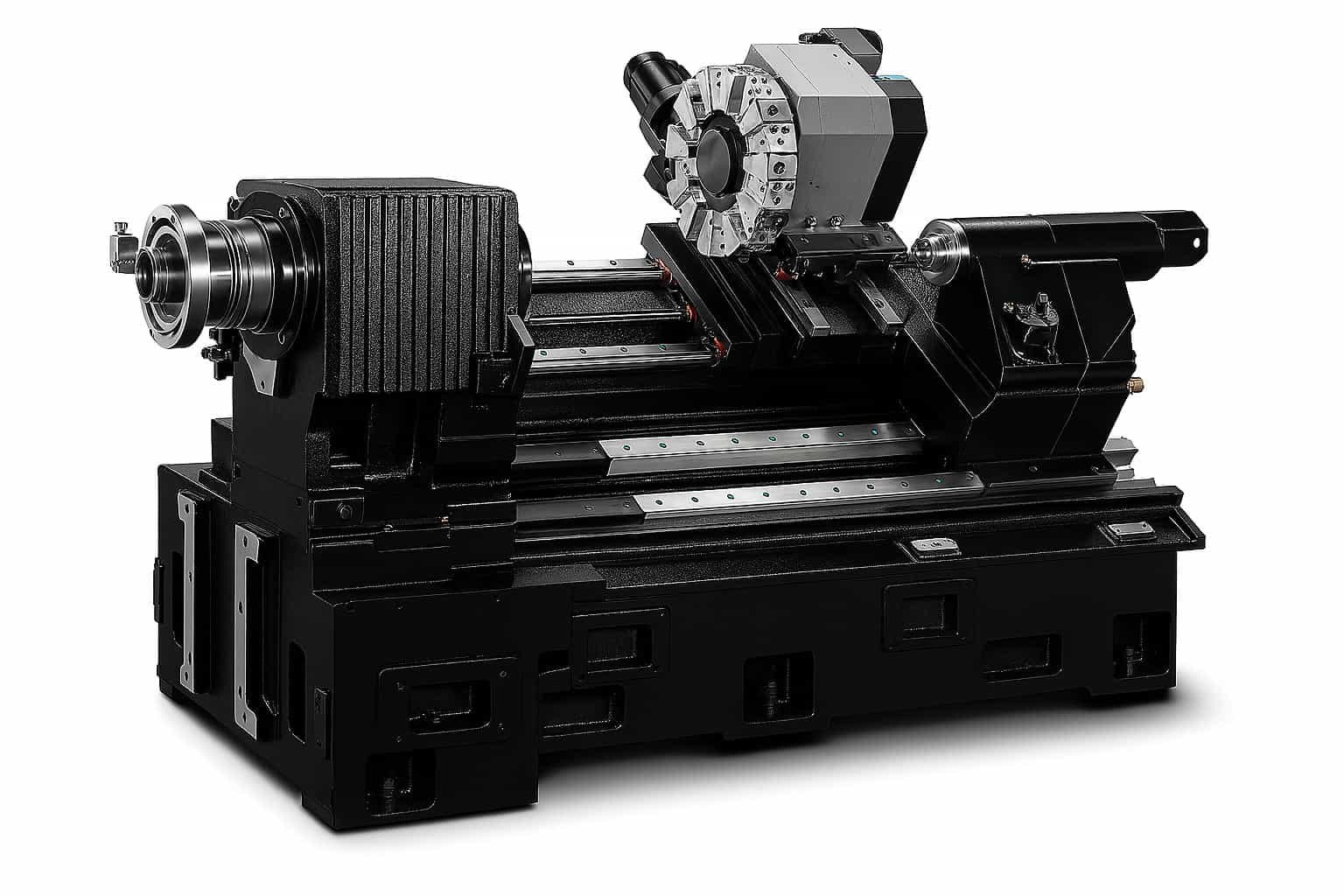What Is a Horizontal CNC Lathe?
A horizontal CNC lathe is a machine tool used in manufacturing for precisely shaping metal or other materials. It operates by rotating the workpiece around a horizontal axis while cutting tools shape it according to programmed instructions.

Các tính năng chính:
- Horizontal Orientation: The workpiece rotates horizontally, making it suitable for long or heavy parts.
- CNC Control: Computer Numerical Control (CNC) ensures high precision and repeatability.
- Versatility: Capable of performing various operations like turning, threading, and drilling.
Operation Principles:
- Workpiece Mounting: Secured on a rotating spindle.
- Tool Movement: CNC controls guide the cutting tools.
- Material Removal: Tools remove material to achieve the desired shape.
Benefits:
- Precision: High accuracy in machining complex shapes.
- Efficiency: Faster production with minimal human intervention.
- Consistency: Uniform quality across multiple parts.
Horizontal CNC lathes are essential in industries requiring precise and efficient metalworking processes.
What Is a Vertical CNC Lathe?
A vertical CNC lathe is a machine tool used to precisely shape metal or other materials. It operates with a vertically oriented spindle and is controlled by a computer numerical control (CNC) system.
Các tính năng và chức năng chính:
- Vertical Spindle Orientation: The spindle is positioned vertically, allowing for efficient machining of large, heavy workpieces.
- CNC Control: Uses computer numerical control to automate the machining process, enhancing precision and repeatability.
- Applications: Commonly used for turning, boring, facing, and threading operations on large or heavy components.
How It Works:
- Setup: The workpiece is clamped onto a rotating chuck.
- Programming: The desired operation is programmed into the CNC system.
- Machining: The CNC system controls the movement of cutting tools, shaping the workpiece as required.
Benefits:
- High Precision: Ensures exact dimensions and smooth finishes.
- Efficiency: Reduces manual intervention, increasing productivity.
- Tính linh hoạt: Capable of handling various complex machining tasks.
Horizontal vs Vertical CNC Lathe: Key Differences
The primary difference between horizontal and vertical CNC lathes lies in the orientation of the spindle. Horizontal CNC lathes position the spindle parallel to the ground, while vertical CNC lathes position it perpendicular. This affects the types of workpieces they handle and their operational efficiency.
Horizontal CNC Lathe:
- Spindle Orientation: Parallel to the ground.
- Workpiece Handling: Better for long, heavy, and cylindrical pieces.
- Gravity Impact: Reduced impact of gravity on spindle, aiding in precision.
- Material Removal: Efficient chip removal due to gravity assistance.
Vertical CNC Lathe:
- Spindle Orientation: Perpendicular to the ground.
- Workpiece Handling: Ideal for large, heavy, and asymmetrical pieces.
- Gravity Impact: Gravity helps in stabilizing the workpiece.
- Workpiece Loading: Easier loading and unloading of heavy parts.
Choosing between horizontal and vertical CNC lathes depends on the specific requirements of the machining task, such as the size and shape of the workpiece, and the desired machining precision.
Bạn nên chọn cái nào?
When choosing between a horizontal and a vertical CNC lathe, consider the type of workpiece and the specific machining requirements. Horizontal CNC lathes are ideal for long, heavy workpieces, while vertical CNC lathes are better suited for large-diameter, shorter components.

Key Differences:
- Orientation:
- Horizontal CNC Lathe: The spindle is horizontally oriented, making it suitable for cylindrical work.
- Vertical CNC Lathe: The spindle is vertically oriented, ideal for heavy and large-diameter workpieces.
- Workpiece Size:
- Horizontal: Typically handles longer and smaller diameter workpieces.
- Vertical: Better for large-diameter but shorter workpieces.
- Applications:
- Horizontal: Suitable for automotive parts, shafts, and long rods.
- Vertical: Ideal for heavy-duty industrial parts, such as large gears and engine casings.
Considerations:
- Space: Horizontal lathes generally require more floor space.
- Gravity: Vertical lathes use gravity to assist with securing the workpiece.
In summary, choose a horizontal CNC lathe for long, cylindrical pieces and a vertical CNC lathe for heavy, large-diameter components.
Phần kết luận
Both horizontal and vertical CNC lathes have their place in the machining world. Choosing the right one depends on your specific part requirements, production volume, and factory setup.

If you’re processing long, lightweight parts, go with a horizontal CNC lathe. If you need to handle heavy or oversized components, a vertical CNC lathe is likely the better choice.


